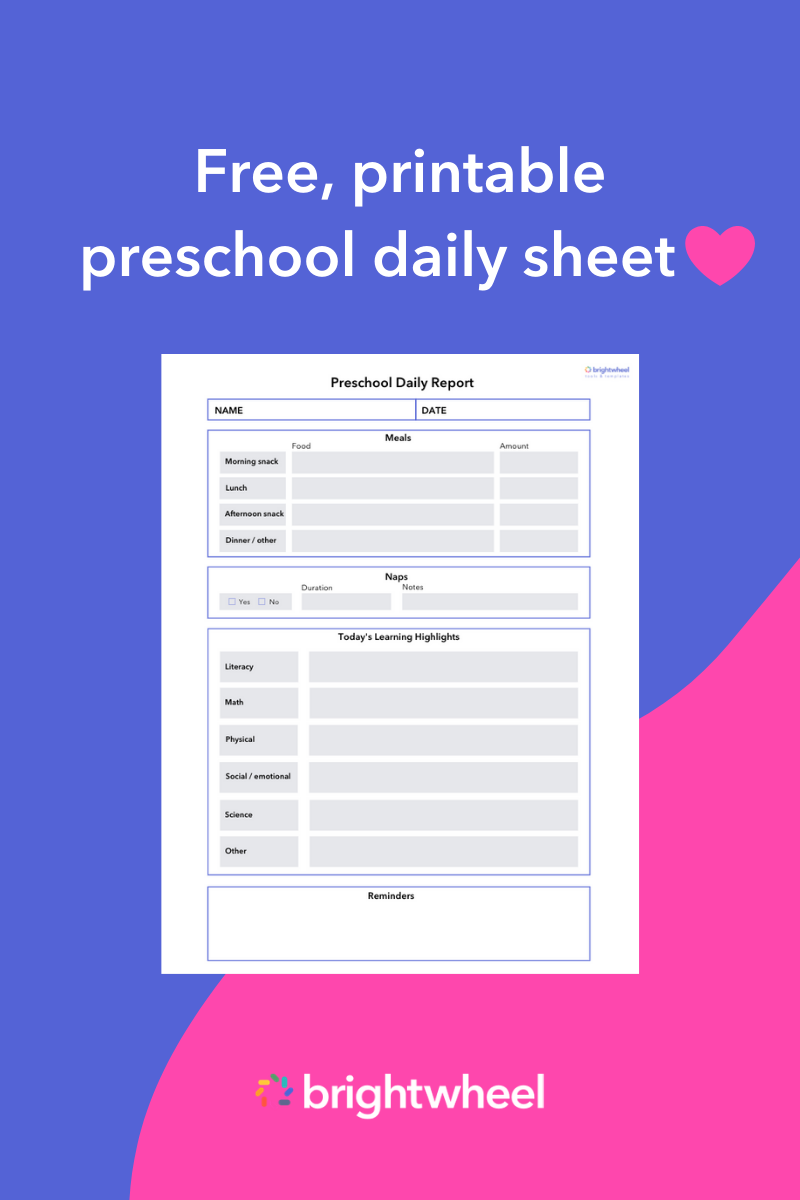
Challenging behavior can create difficulties in the classroom, especially if these issues go unaddressed. When a child displays challenging behavior, your first instinct as their teacher may be to react using a corrective measure such as a time out or revoking a particular privilege. However, no child is the same and they act out differently for various reasons. Therefore, before taking action, it's essential to know what the best approach is and what strategies can help prevent the likelihood of the issue arising in the future.
This article will discuss challenging behavior in early childhood, possible causes, and what steps to take to address them. Keep reading to learn more.
What's considered challenging behavior in early childhood?
Challenging behavior is any persistent behavior that negatively affects a child’s learning or interactions with peers and adults. Young children often display a wide range of emotions and have different ways of expressing themselves. As they get older, are put in new social settings, and interact with their peers, they begin to pick up new habits, which could be both good and bad.
Some common forms of challenging behavior include:
- Tantrums
- Defiance (unwilling to follow directions)
- Excessive anger (after not getting their way)
- Causing physical harm to themselves or others (kicking, fighting, biting)
- Fussiness (refusal to wear certain items or eat certain foods)
- Disruption (takes away from other children's learning)
All behavior is communication, and children have different ways of communicating. Displaying challenging behaviors can be one way of expressing an unmet need. These unmet needs fall into two categories: the child doesn't want to do something or they need or want something. Your first instinct may be to use a blanket consequence such as time out or lost privileges for handling these issues. However, this route can be damaging or ineffective.
How to track challenging behaviors
As their teacher, it's important to learn more about the reasons for their actions and determine what steps are needed to guide them in behaving and expressing themselves better. The best approach to get to the root of the issue is to observe and learn more about what could be behind it.
It may be helpful to utilize the ABC formula: antecedent, behavior, and consequence. With this process, you can identify the causes of challenging behavior, strategies to use to prevent or minimize the behavior, and responses or solutions to stop the behavior from happening in the future.
The ABC model of behavior includes:
- Antecedent: The events or factors that lead up to the challenging behavior. These could be time of day, settings, or activities.
- Behavior: This is the response your child has to the particular antecedent.
- Consequence: What happens immediately after the behavior. This could be a response from an adult or the removal of activities or items as a result of the challenging behavior.
Why is it important to address challenging behaviors?
There are multiple reasons why it's important to address challenging behaviors. A child's actions can negatively impact them and their classmates. It can interfere with their learning, make them uncomfortable, and sometimes lead to physical harm. Failing to address, understand, and correct this behavior can lead to bigger issues in the future.
With brightwheel's classroom management feature, you can manage your classroom attendance and ratios, track children's progress with any challenging behaviors, and share updates with families in real-time. You can use messaging to build a supportive network among families and staff at your center and enable families to stay informed with direct access to their child's profile in the brightwheel app.
In addition, addressing challenging behaviors can uncover more significant problems. Remember, this behavior is communicating an unmet need, so it's necessary to discover what that need is. For example, a child's behavior might be a result of:
- Problems they're experiencing at home
- Being in a stressful or overwhelming environment
- Major changes in their life or family dynamics
- Underlying health issues, social, emotional, or developmental problems, or neurodiversity such as autism, ADHD, Asperger's Syndrome, or learning disabilities
Because some children cannot articulate their wants and needs or may be incapable of controlling their behavior and decisions, it's up to you as their teacher to work with families to figure out what issues they may be facing.
How to address challenging behaviors
Setting rules and boundaries in your classroom is important for you and your children. It ensures that everyone is in an environment where they can learn, and it teaches children what type of behavior is acceptable. How you respond to challenging behavior depends on what the child is doing and what you've observed using the ABC model.
As you address challenging behaviors, make it clear what behavior is expected. There are a few options to discourage challenging behavior, including:
- Encouraging empathy: Try incorporating activities that focus on empathy and teach children how their actions might make their classmates feel and ask how they might feel in a similar situation.
- Ignoring: When it comes to attention-seeking behavior, ignoring the child can eventually discourage them from continuing since they're not being rewarded with the attention they want.
- Distraction: Finding an alternative that appeals to the child or redirecting a challenging behavior to a more positive one might prevent them from continuing the negative behavior.
The difference between guidance and discipline
Responding to challenging behavior with conventional discipline is too closely related to using punishment. This can make the child feel negative emotions such as rejection, hurt, or anger which only worsens the situation.
Consider using guidance to create a more encouraging and positive environment. You can use it more as a teaching moment by helping the children learn from their actions. Building a relationship with your class and individual children helps form a bond and build trust so they'll be receptive to your guidance when conflicts occur.
Classroom management strategies
Instead of responding to challenging behavior with punishment, you can incorporate educational and positive practices into your approach. Some helpful classroom behavior management strategies include:
- Demonstrate to children that they can control their behavior. Don't hesitate to show the child their impact on themselves and the class when they misbehave. Let them know they have choices in how they respond and the consequences for each.
- Create a calming corner. When stressed or overwhelmed, children can turn to a calm down corner to sort through their feelings and emotions, find coping strategies, and come to a solution in a positive, calm, and safe space.
- Turn negatives into positives. When a child displays negative behaviors, it's easy to want to respond with negativity, which can further create an unhealthy relationship and classroom environment. So instead, incorporate positive language into your responses to deter children from these challenging behaviors. For example, if your student is defiant and refuses to sit in their seat, don't tell them to "Sit down." Instead, you can respond, "Let's save some energy to play with your friends during recess."
- Teach your class about positive behavior. Much like a calming corner, displaying examples of what positive behavior looks like around your classroom can encourage better behavior. It also helps to lead discussions about how positive actions can create a happier, more favorable environment for their peers.
- Establish rules and boundaries. Set expectations and boundaries for how to behave in your classroom. Don't use negative language and punishment for breaking the rules, but let your class know what is and isn't acceptable. Visual aids such as posters can help them better understand expected behavior.
Addressing challenging behaviors with families
Combating challenging behaviors is a team effort. Little progress will be made if you only address the issues in class, with no reinforcement at home. Meet and communicate regularly with families to share details of how their child is behaving. Share any concerns, offer insights, and gather information on what may be influencing this behavior. Then, together you all can create a plan to address the behavior.
Bringing your concerns to families can be a sensitive subject. However, some things to remember are:
- Express your concerns for the child
- Avoid negative and offensive language
- Don't minimize the issue
- Emphasize that you care and want to work with them to improve their child's behavior
- Ask if they've noticed the same behavior at home
- Don't place blame or tell them to punish the child
With brightwheel's daily report feature, you can log activities quickly and easily and send automated summaries to families every day. Keep families updated on what's happening in the classroom and encourage a home-to-school connection by including tips on how they support their child's learning at home.
When to seek professional support for challenging behaviors
All preschoolers and toddlers are bound to act out at some point; however, some issues are more problematic and may call for more action. If you have children signaling that they may have a more severe problem or it's due to a more significant underlying issue, it may be time to enlist the help of a professional.
Suppose you've met with the family and have incorporated guidance and management strategies into your response, but the challenging behavior continues or worsens. Aggressive behavior, changes in mental health, injuries to self or classmates, and more can be warning signs that call for a professional evaluation. More action may be required, and you must meet with the family again to discuss your concerns and next steps.
In conclusion
It's common for toddlers and young children to go through behavioral changes. As their teacher, be sure to respond constructively to work towards improving their behavior. Setting rules and boundaries and using positive reinforcement can guide children in the right direction.
Brightwheel is the complete solution for early education providers, enabling you to streamline your center’s operations and build a stand-out reputation. Brightwheel connects the most critical aspects of running your center—including sign in and out, parent communications, tuition billing, and licensing and compliance—in one easy-to-use tool, along with providing best-in-class customer support and coaching. Brightwheel is trusted by thousands of early education centers and millions of parents. Learn more at mybrightwheel.com.

